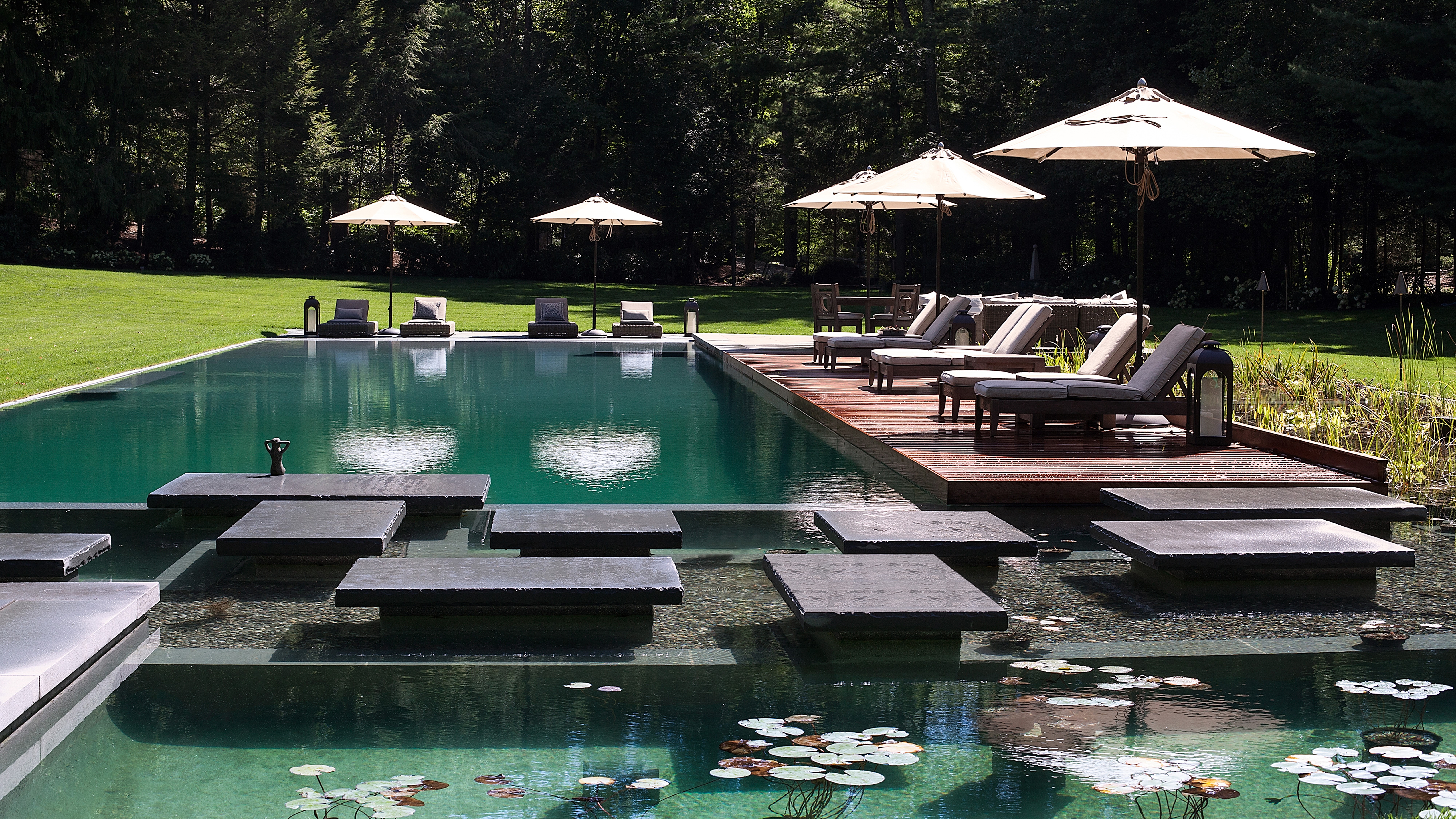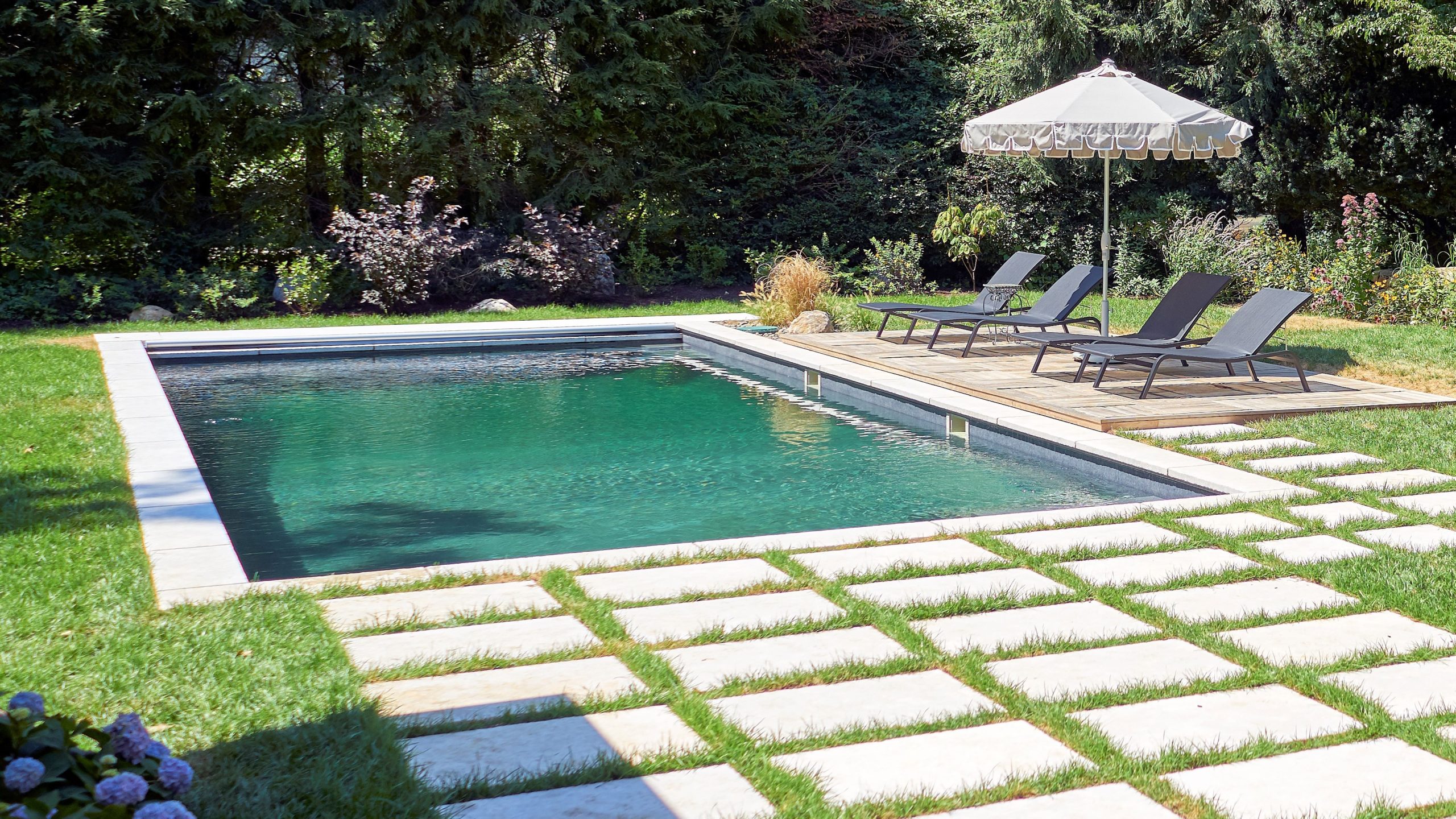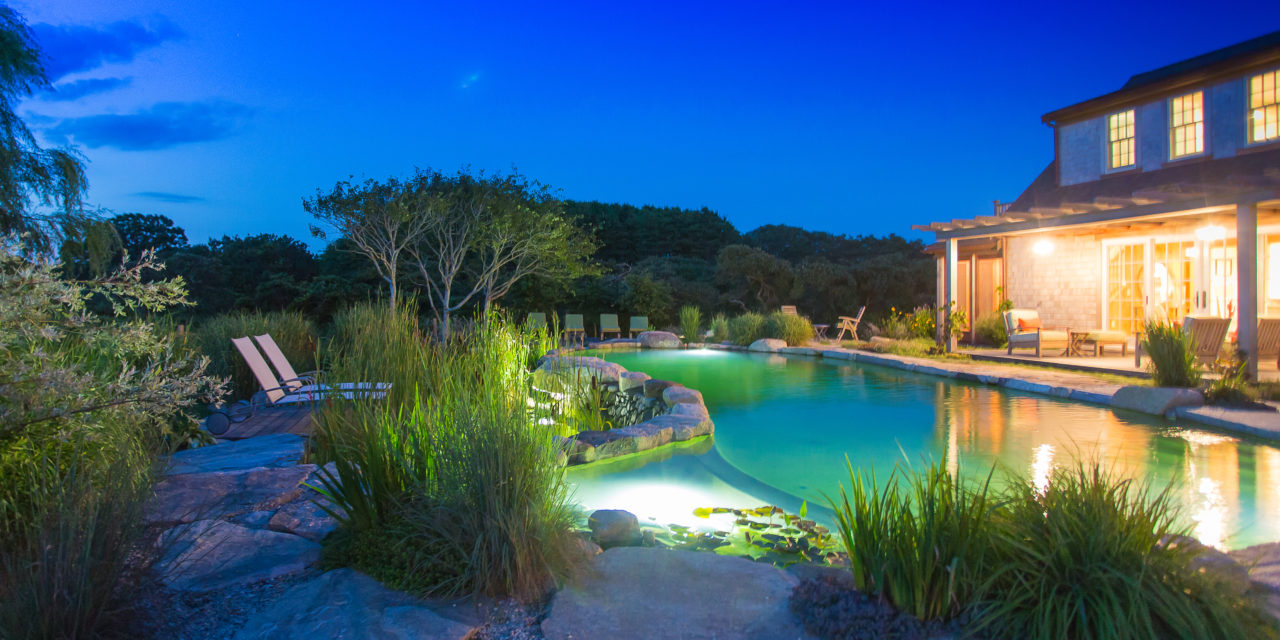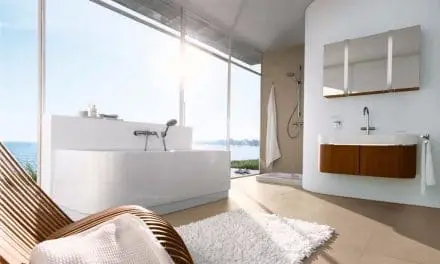Images Courtesy BioNova Natural Pools – North America
Experience the Joy of Swimming in a Chlorine-Free Natural Pool!
By Brian Libby
Most of us know the uncomfortable sensation of swimming in an over-chlorinated pool. “You get hit in the face with that chlorine blast: the eyes water and the nose runs,” says Allen Schnaak of BioNova Natural Pools, who spent decades in the chlorinated-pool business. Who hasn’t carried that chlorine smell into our home, lingering on our bodies and swimwear? Chlorine is widely used for cleaning and pool maintenance, but it is a dangerous chemical that leads to thousands of injuries in the US every summer, most from children and teens inhaling toxic fumes. Coughing, choking, and wheezing happen with even small exposures.
We’re all looking at new, wellness-centered and sustainable solutions, so why not rethink pools? “Natural biological filtration,” Schnaak proposes, “an idea whose time has come.” Today, natural pools are an increasingly attractive option for those who don’t want to deal with the chemicals or swim in chlorinated water. Natural pools mimic Mother Nature by using controlled bacteria and fungi-based filters to naturally eliminate contaminants.
Newfound Popularity
BioNova Natural Pools deals exclusively in natural swimming pools and in seeing a nearly five-fold increase in inquiries this year. Sales will likely double for the third year in a row. “The pandemic and socially isolating at home forced many people to bump up their home improvement projects, and swimming pools are among the many outdoor living spaces that have become popular,” Schnaak says. “But there’s also the rising tide of social awareness with sustainability practices.”
Natural pools don’t necessarily directly compete with chemically-treated pools, so much as expand the customer base. “Only about 28 percent of natural pool customers say they’d been willing to consider a traditional pool,” Schnaak says, referencing an internal poll. “That illustrates how this segment of the market is being unaddressed.”
History
Although today less than one percent of American public pools are filtered and cleaned naturally, they’ve enjoyed greater proliferation in Europe, where the trend began. Gerhard Brandlmeier, an Austrian landscape contractor, began building what are known as swimming ponds under the BioNova name in 1985. The first world’s first public natural swimming pool was completed five years later in Herzogsdorf, Austria. In 2007, James and Hae-Sun Robyn, pool company owners in New Jersey, brought BioNova to the United States responding to growing customer demand for chemical-free pools. The City of Minneapolis constructed the first public natural swimming pool in North America at Webber Park.
How Natural Pools Work
Rather than repeatedly adding chlorine and other chemicals that exterminate all microbes in the water, a natural swimming pool allows the water to reach its own natural balance through biology. In a kind of natural feedback loop, beneficial bacteria and fungi remove debris (known as nutrients) from the water by feeding on it. Whether the community of microorganisms lives on the roots of plants or on another material, a biofilm forms. The flow of water from the swimming area into the biological filter area adjacent to the pool provides abundant nutrients to the biofilm. The microorganisms clean the water by consuming the nutrients.
“Water flow and nutrient load is the buffet that feeds the biology,” Schnaak explains.


Ponds vs BioPools
The two types of natural pools look different but share the same basic approach. First, BioNova’s BioSwimPond features a swimming area that’s paired with an adjacent regeneration zone that looks and acts like a pond or wetland. Slow-moving water and a combination of above- and below-water grasses, lilies, and other plants help create what Schnaak calls “passive filtration.” There is an approximately one-to-one ratio between swimming area and regeneration zone. Many customers choose the BioSwimPond especially for the aesthetic beauty and its ability to attract wildlife.
But for those who want a natural pool that looks just like any other swimming pool, the BioPool, includes all the below-water portions of the BioSwimPond, but not the above-water plantings. With a BioPool, the regeneration zone can be hidden underground, either immediately next to the swimming area or in a separate location.
Less-popular planted ponds
“If you do a ‘natural pool’ search on Google, you’re going to find planted swim ponds. But that’s a little misleading, because the reality is you don’t need plants to make a pool natural. About 80 percent of the filtration in a BioSwimPond is being done by the microbial community living in the substrate around the roots.” So a BioPool can look just like a traditional pool. It simply moves water through the biofilm much faster. “If the swim pond environment is designed to mimic the ecosystem of a pond, the BioPool system is designed to mimic the ecosystem of a river or stream, with faster-moving water,” Schnaak said.

Cost of Natural Pools vs Conventional
“Every pool and biofilter system is custom-designed for the space and use needs,” Schnaak says. “No two pool sites are the same. There’s such a diverse assortment of sizes, shapes, forms, and functions.” Just as BioNova’s BioPool with a biofilm filter most closely resembles the look of a traditional chemically-treated pool, so too does this product compete with traditional pools in terms of cost. On a per-square-foot basis and depending on the materials chosen for the pool (concrete and plaster, vinyl, fiberglass), the costs start at about $100 for the total system, with a 16-by-32-foot swimming area starting at around $75,000, according to Schnaak.
The BioSwimPond does cost more than a traditional pool, simply because of the extra surface area required for the planted regeneration zone. Those installations start at about $100,000.
Maintenance
Natural pools require far less maintenance than traditional chemically-treated pools. (Chlorine is the enemy!) Periodically, though, these systems must be cleaned out. For a BioSwimPond there must be water-garden maintenance, about every three months: thinning plants, removing unwanted debris, and cutting them back at the end of the season. The BioPool needs maintenance only three to four times a year: reversing the water flow and flushing out the biofilm filter. But for any gardener, the liquid byproduct serves as a rich fertilizer that yards and plants will love.
What’s Not To Like?
While a natural swimming pool is proven to be as safe and clean as a chemically treated pool, there is one aesthetic caveat. “If it’s got to be blue as window cleaner, then this is not the pool for you,” Schnaak says. Depending on the light and the liner material, a naturally filtered pool’s water can look gray or even slightly green. That’s just what happens in nature. “Many of us have grown up swimming in lakes and rivers. I certainly did,” Schnaak says. “And I don’t think twice about it.”
And besides, one swim in a natural pool without that chlorine smell and residue, and it’s hard to go back. It’s not just a sustainable swim, but a sublime one.








